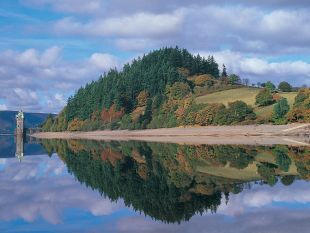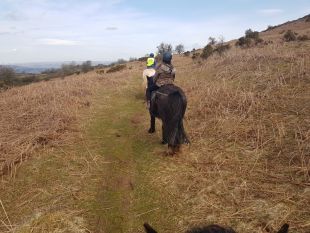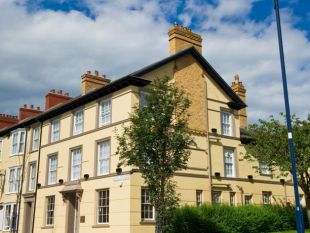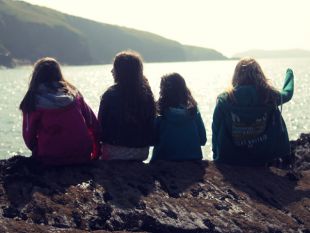Mid Wales
Let us help you plan your ideal vacation in Mid Wales...
Clean air… golden beaches… ancient hills… and a sense that time has stood still.
That’s an all-too-brief summary of what today’s visitor can expect from Mid Wales, one of the least populated and most unspoilt areas of Britain.
Stretching from Cardigan in the south to bucolic Powys and the Brecon Beacons in the east, this is arguably the most green and pleasant parcel of land in Wales, boasting a cocktail of landscapes ranging from lush farmland and sheep-covered moors to heather-clad mountainsides and salmon-haunted rivers.
On the coast of Ceredigion lies Cardigan Bay, the United Kingdom’s first designated Marine Heritage Coast; a place of wide-open seas, sun-kissed sand and varied wildlife. One of the most popular stretches of coastline in the UK, it annually attracts thousands of people drawn to seaside hotspots like Aberporth and Penbryn.
The historic town of Cardigan (in Welsh, Ceredigion) sits close to the mouth of the River Teifi. It grew around a 12th century castle (only parts of it have survived) and was the scene of the first eisteddfod organised by Prince Rhys ap Gruffudd in 1176. The town was an important trading port until the river silted up in the 19th century and the new-fangled railway sealed its fate. Its finest piece of architecture is a 12th century, five-arched bridge that is still standing after more than 800 years.
Not far from here is one of the greatest single tourist sights in Wales, the thunderous falls of Devil’s Bridge in the picturesque Vale of Rheidol. Three bridges are stacked one on top of another, with the lowest dating to the 11th century. It was built by monks from the Cistercian monastery of Strata Florida Abbey near Tregaron. The falls are on the route of the narrow-gauge Rheidol heritage railway.
Just a dozen miles away lies the seaside resort of Aberystwyth - unofficial bastion of the Welsh language - that is dominated by the University of Wales, a magnificent building erected in the mid-19th century.
The beautiful Brecon Beacons National Park lies southeast. It contains the Black Mountains, the towering peak of Pen-y-Fan at over 2,000 feet, the lakes of Llyn y Fan Fach a nd Llyn y Fan Fawr, the picturesque reservoir of Lake Vyrnwy and the spectacular Elan Valley.
Top attractions here include the Dan-yr-Ogof Showcaves, thought to be the largest cave system in western Europe, and the Brecon Mountain Railway. The area has a number of ancient 'memorial' stones, including the nine-feet tall stone of Madog.
The Brecon Beacons Mountain Centre sits atop the 1100 ft peak of Mynydd Illtud, a mountain that takes its name from a local saint. It borders the Great Forest of Brecknock, a vast hunting forest once reserved for Bernard Newmarch, half-brother of William the Conqueror. The Beacons lie within the vast, ancient kingdom of Powys, an area that fell into English hands in the 13th century. Welshpool is a small but major town of the region. It's attractions include a small market, the fascinating museum of Powysland and a light heritage railway.
Nearby stands Powis Castle; built on the site of a Norman fort, it was bought by Sir Edward Herbert in 1587 who transformed it into an Elizabethan palace. It has spectacular, terraced gardens and an enthralling museum dedicated to the life of Clive of India.
The highest waterfall in Wales can be found at Pistyll Rhaeadr. Beneath its cascading waters is a natural stone arch known as Fairy Bridge. In the photo opposite, you can get some impression of the scale if you can pick out the two people standing at the foot of the second cascade.
The village of Machynlleth was made the capital of Wales by freedom fighter Owen Glendower who held a parliament here in 1404 and was crowned king. Today the place is home to the seven-acre Centre for Alternative Energy, a self-sufficient community that generates its own power and water while educating visitors on the topical subject of energy-efficiency.
Of course, there's much more to be said about Mid Wales – it has an abundance of beauty spots and a plentiful supply of unspoiled villages. It's also an undoubted paradise for anyone seeking open-air excitement – angling, golf, walking, cycling, horse-riding and water sports are all popular activities that are well catered for. In addition it is a place of great gardens, historic castles and countryside canals.
Read More

























